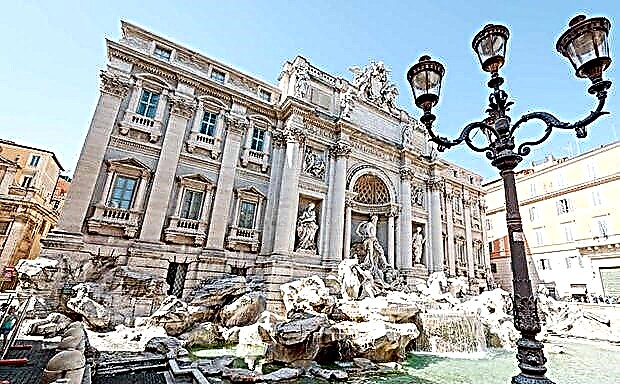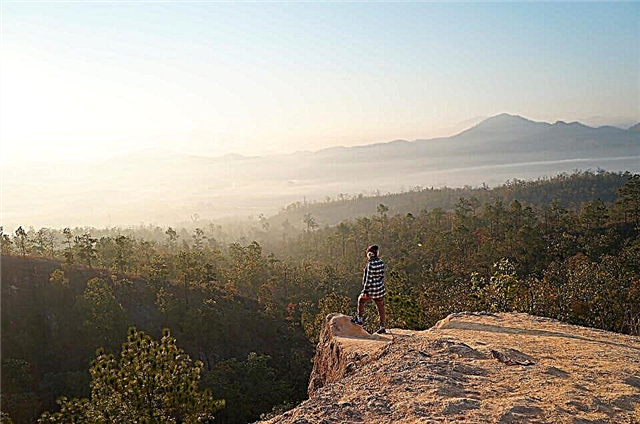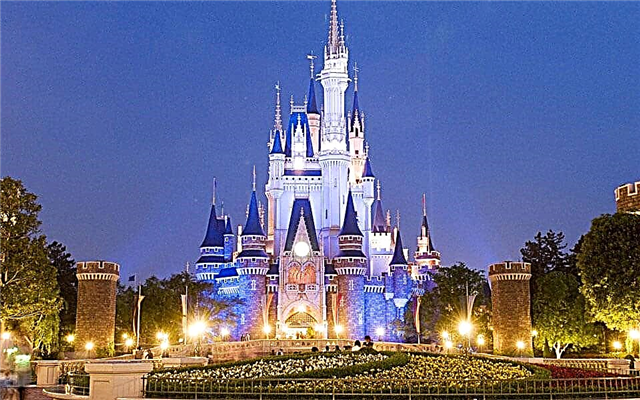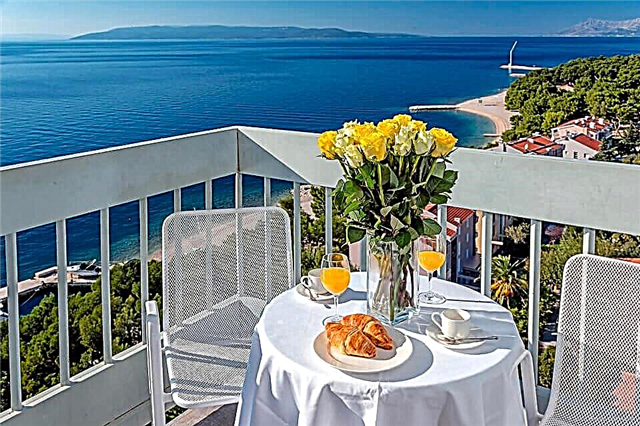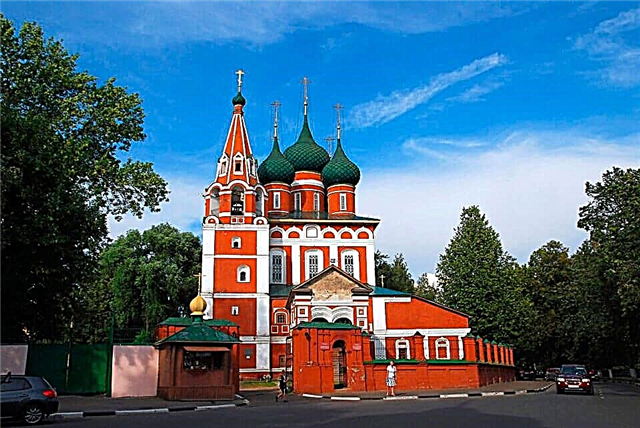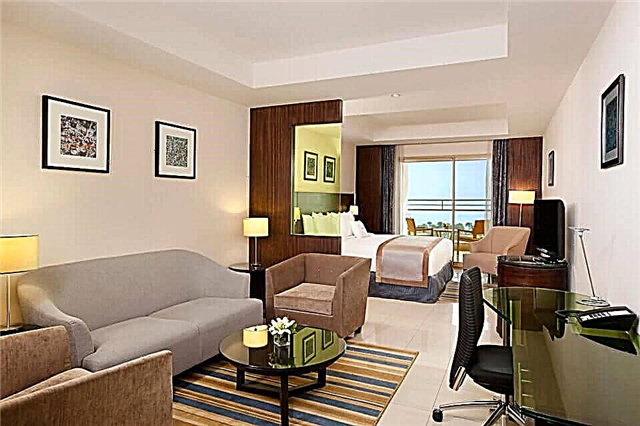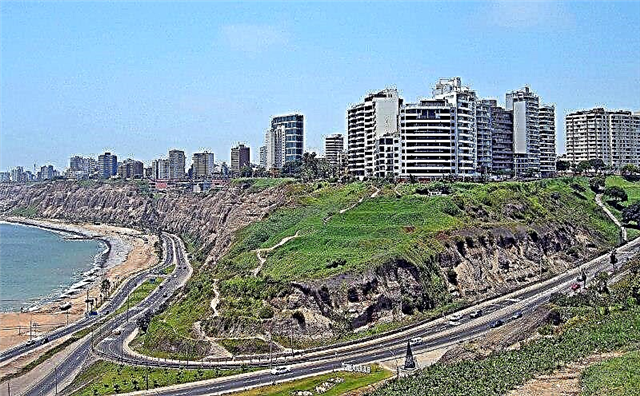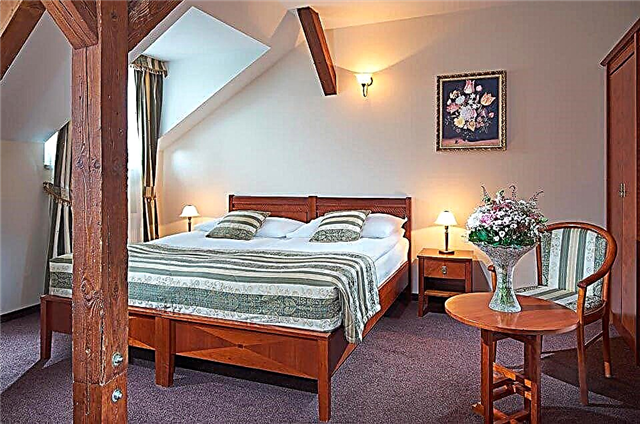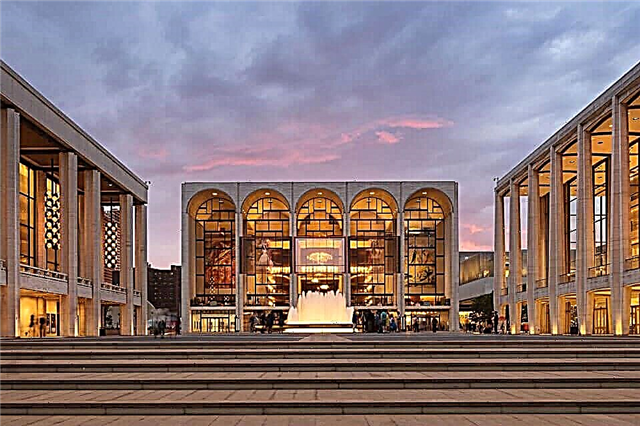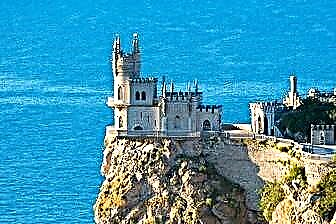Crimea is a real pearl of the Black Sea. This unique peninsula has attracted people since antiquity; there are traces of ancient and medieval civilizations. Crimea managed to visit both a rich Greek colony, and a harbor of Italian merchants, and an outpost of the Ottoman Empire before becoming a resting place for the rulers of the Russian Empire. During the Soviet era, the peninsula was the main beach of a huge country.
First of all, a vacation in Crimea is a vacation on the beaches of the picturesque South Bank and well-known medical resorts of the West Bank. In between sunbathing, tourists go to see numerous attractions: ancient cave cities on the high plateaus, magnificent imperial palaces in Livadia and Massandra, the famous Sevastopol and the old Khan's Bakhchisarai.

Apartments and hotels at affordable prices.
from 500 rubles / day
What to see and where to go in Crimea?
The most interesting and beautiful places for walking. Photos and a short description.
Swallow's Nest
A famous architectural monument of the southern coast of Crimea, one of the most famous landmarks of the peninsula. In the XIX century. here was the private residence of a retired general, later the land passed into the hands of the German Baron Steingel, under whom a neo-Gothic palace was built in 1911. After the end of the Civil War, the Swallow's Nest fell into decay and only in the 1960s. recovery began.

Livadia Palace
A palace complex with a landscape park in the village of Livadia. The first buildings appeared here at the beginning of the 19th century. After 1861, the Livadia Palace was sold to the royal family and began to be used as a summer residence. The white-stone building that has survived to our time was built at the beginning of the 20th century. During the Second World War, the entire territory of the park was destroyed, the palace lay in ruins. It was restored before the start of the Yalta Conference in February 1945.

Vorontsov Palace
Museum-reserve at the foot of Mount Ai-Petri in the village of Alupka. The complex was built in the first half of the 19th century for Count Mikhail Vorontsov according to the project of the English architect Edward Blore (he took part in the construction of the Scottish castle of Walter Scott and Buckingham Palace). The western part of the building is made in the style of the English Tudors, the southern facade is an example of Moorish architecture.

Massandra Palace
Another Crimean palace of the late 19th century not far from Yalta. Initially it belonged to the Vorontsov family, but was then purchased for the imperial dynasty. The castle was built with elements of the style of the times of the French king Louis XIII, the construction work was supervised by the architect M. Mesmacher. In the Soviet years, the palace was used as a summer residence for the top officials of the state; now there is a museum on the territory.

Khan's palace in Bakhchisarai
The former residence of the Crimean khans, built in the 16th century. The main architectural idea of the complex is to convey the idea of the Crimean Tatars about heaven on earth. Several generations of the rulers of the Khan dynasty of Gireev lived here, each trying to expand and supplement the palace complex. In the XVIII-XIX centuries. the palace burned, rebuilt, renovated and almost lost its original appearance. Only in the 20th century was it possible to restore the original interiors.

Mount Ai-Petri
One of the mountain peaks of the southern coast of Crimea. Belongs to the Yalta mountain - forest reserve. Previously, the Greek monastery of St. Peter was located here. A cable car runs through the mountain for almost 3 km. in length, which is recognized as one of the longest in Europe. During the ascent to the top in a booth, the tourist gets the opportunity to admire the picturesque views from a bird's eye view.

White rock Ak-Kaya
Natural and archaeological monument of Crimea, located in the valley of the river. Biyuk-Karasu. The rock is a massif composed of white limestone rocks. At the foot of Ak-Kai, the sites of primitive man were found, the remains of tools there and fossilized bones. Ancient Scythian burial mounds were excavated at the top. An 800-year-old oak tree grows next to the rock. It is believed that under this tree Suvorov negotiated with a representative of the Turkish Sultan.

Ayu-Dag (Bear Mountain)
Historical, archaeological and natural monument of the peninsula, where the remains of a fortified settlement of the VIII-XV centuries have been preserved. One of the legends says that the mountain is a petrified huge bear that wandered through the valley, destroyed everything around and settled down on the shore at the behest of the sea god. More than a dozen species of rare animals listed in the Red Book live on the territory of the reserve.

Marble cave
Karst cave near the village of Mramornoye. The age of education is several million years. Until now, the cave continues to expand, as the processes of the formation of the young Crimean mountains continue. There are several large halls in the cave, through which excursion routes with a length of about 1.5 km are laid. Here you can admire the rarest types of crystals and stalactites.

Cave city Chufut-Kale
A walled city located on a high-mountainous plateau near Bakhchisarai. The road to the cave city passes through the territory of the rocky Holy Dormition Monastery. It is believed that Chufut-Kale appeared in the 5th-6th centuries. as a fortification on the outskirts of the Byzantine possessions. In the XIII-XIV centuries. the city became the center of a small principality - a vassal of the Crimean Khanate, where representatives of the Karaite people began to settle. In the 19th century, the last inhabitants left Chufut-Kale.

Chersonesos Tauride
Ancient Greek city, founded in the 5th century BC. Subsequently, it became a large and wealthy center of the entire Greek colony on the peninsula. From the 2nd century BC was dependent on the ancient Bosporus kingdom, later became a vassal of Rome. Chersonesos is also one of the cradles of Christianity - the first followers of Christ settled here in the 1st century. In the X century in Chersonesos, the prince of Kievan Rus Vladimir was baptized.

Genoese fortresses
Three fortified forts of Genoese sailors located in Balaklava, Sudak and Feodosia. In the Middle Ages, they were the Black Sea outposts of the mighty Genoa and were used for protection from the sea. Under an agreement with the Tatars in the XIV century, the Genoese annexed the territory from modern Feodosia to Foros to their possessions. The area was called Genoese Gazaria. In the 15th century, the fortresses passed into the hands of the Ottoman Empire.

Foros Church
Another name for the temple is the Church of the Resurrection of Christ. It was built at the end of the 19th century on a cliff that rises 400 meters above sea level. Alexander III gave the order to build a temple in memory of the train crash, during which the whole family of the emperor was almost killed. A few years after the victory of the 1917 Revolution, a restaurant was placed in the building, which existed until the early 70s. In the 90s. the temple was restored at the expense of the Ukrainian government.

Assumption cave monastery
An active male monastery, presumably founded in the 8th century A.D. fugitive Byzantine monks. The monastery existed for many centuries, during the Ottoman rule, even the Crimean Khan came here to pay homage to local shrines. After the establishment of Soviet power, the monastery was closed, the earthquake of 1927 destroyed the buildings. Renaissance and restoration began only in 1993.

Monument to the Scuttled Ships
The monument in the waters of the sea on the embankment of Sevastopol is considered a symbol of the city. It was erected in honor of the events of the middle of the 19th century, when Russian ships were deliberately sunk in the Sevastopol Bay in order to block the path of the Anglo-French fleet.To avoid a battle (since the enemy's fleet was more powerful and better armed), Prince Menshikov decided to flood the ships, but not to let the enemy troops approach the city.

Museum panorama "Defense of Sevastopol"
Historical monument dedicated to the events of the Crimean War of 1853-1856. This is a monumental panorama of the defense of Sevastopol by the master of battle painting Franz Alekseevich Roubaud, located in a round-shaped building. Work on the canvas has been in progress since 1901. F. Roubaud created his masterpiece with the help of students of the Bavarian Academy of Arts and several German painters.

Object 825GTS
Formerly a secret military facility at Balaklava, a former underground submarine base. During the Soviet era, it was one of the most classified in the USSR. For many years Balaklava Bay was not marked on the maps. After the fall of the USSR, the facility was launched and plundered, only in 2004 the Ukrainian government organized a museum of the history of the submarine fleet there. After the transition of Crimea to Russian jurisdiction, the Russian authorities plan to place a new base there.

Balaklava Bay
A small bay with intricately indented and picturesque shores, where according to Homer's "Odyssey" the legendary navigator visited. On the shores of the bay there is one of the Genoese fortresses. It is believed that the first settlements arose here in the VIII-VI centuries. BC. During the Crimean War, the British base was located in the bay, in Soviet times - a secret submarine parking.

The Grand Canyon of Crimea
Landscape landmark of the Crimean Peninsula, a state reserve since 1974. The canyon is a wide crack in the rock formed during the formation of the Crimean Mountains. There are several cliff capes along the crevice; the river flows along the bottom. Auzun-Uzen. Several hiking trails with observation platforms run along the bottom of the canyon and in the surrounding area.

Ghost valley
Accumulation of rocks on the western slope of the South ridge of the Demerdzhi mountain range. More than 100 boulders of various sizes are scattered in the valley, the largest reaching 25 meters in height. At dawn and dusk, the stones cast bizarre shadows that move and intertwine with each other. That is why the place received the poetic name "Valley of Ghosts".

Cape Fiolent
Natural area 15 km. from Sevastopol with an expressive landscape, a 10-kilometer coastline and a unique flora. On the cape there is the St. George Monastery and Yashmovy Beach, connected by a staircase of several hundred steps. Cape Fiolent is considered the best place for diving, as there is almost one hundred percent visibility and no ships are moored.

Golitsyn trail
A three-kilometer trail in the village of Novy Svet, created by the Golitsyn princes especially for the arrival of Emperor Nicholas II. It is now a popular tourist route. The trail starts at Mount Eagle, goes along the coast past Mount Khoba-Kai to the through Golitsyn grotto. On the route, there are observation platforms in the most beautiful places, fragrant pine trees grow around.

Jur-Jur waterfall
It is considered the largest and most powerful Crimean waterfall. Jets of water rush down from a height of 15 meters, the maximum size of the channel is 5 meters wide. It remains full of water even during the long dry season. Together with water stones sometimes fall into heights. The waterfall is located in a mountain-wooded protected area, the water temperature even in hot summer time does not exceed 10 ° C.

Nikitsky Botanical Garden
It is located about 10 km from Yalta. The garden covers an area of several tens of hectares; scientific activities and research institutions are located on its territory. It appeared at the beginning of the 19th century with the assistance of Count Vorontsov and botanist F. Biberstein. The first director was the famous naturalist H. Steven, who over 12 years of work collected and adapted to local conditions about 500 plant specimens.

Crimean wines
Crimean wines are several well-known brands that produce various varieties of grape drink. The most famous of them: "Massandra", "Solnechnaya Dolina", "Inkerman", "Novy Svet", "Koktebel". The Novy Svet brand is famous for its excellent champagne (the brut variety is especially good), Massandra is famous for the specific taste of wines, and Inkerman produces good red wine under the same name.


